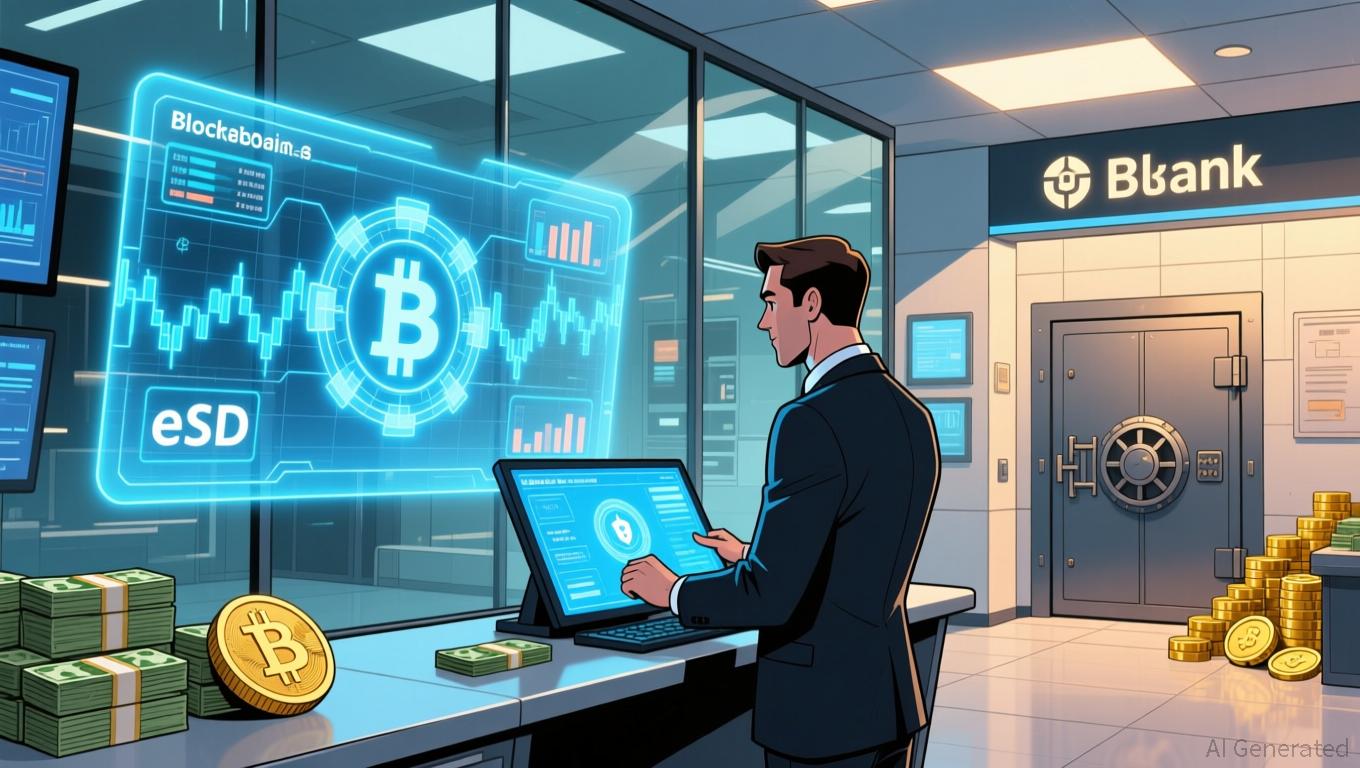Brazil's Cryptocurrency Clampdown: Combating Illicit Activity or Hindering Progress?
- Brazil's Central Bank enforces strict crypto rules by Feb 2026, requiring VASPs to obtain authorization or exit the market. - Stablecoin transactions and cross-border transfers are reclassified as foreign exchange operations under $100k capital controls. - $2-7 million capital requirements spark industry criticism, with concerns over stifling competition and compliance timelines. - Mandatory reporting for international transactions aims to combat money laundering, aligning with global standards like EU's
Brazil Implements New Crypto Rules to Tackle Illicit Activities
The Central Bank of Brazil has introduced a comprehensive set of regulations to tighten control over the rapidly expanding crypto industry, aiming to set a regulatory benchmark in Latin America. Taking effect on February 2, 2026, the new framework mandates that all virtual asset service providers (VASPs)—such as exchanges, custodians, and brokers—must secure approval from the central bank or withdraw from the market by November 2026. These steps are designed to address money laundering, fraud, and the unlawful use of stablecoins, while also bringing crypto businesses into the mainstream financial sector, according to a
A key feature of the new rules is the designation of stablecoin transactions and international crypto transfers as foreign exchange activities. This change means these transactions now fall under Brazil’s existing currency controls, which include a $100,000 limit for dealings with unauthorized parties, as highlighted in an
The new rules also set strict capital requirements, with minimum reserves ranging from $2 million to $7 million depending on the type of business. For example, exchanges and brokers must maintain $7 million, while custodians are required to hold at least $3.5 million, as outlined in a
To further deter illegal activities, the central bank has established mandatory reporting for cross-border transactions, including stablecoin payments and transfers to self-custody wallets. Starting in May 2026, licensed VASPs will be required to file monthly reports detailing client data, asset categories, and transaction amounts, according to a
This regulatory overhaul comes as Brazil rises to become the world’s fifth-largest crypto market, handling $319 billion in transactions from mid-2024 to mid-2025, according to Chainalysis and cited in the Yahoo Finance report. President Luiz Inácio Lula da Silva has promoted crypto as a means of financial inclusion, though officials have also raised alarms about capital flight and the opaque nature of stablecoin transactions, as mentioned in the Yahoo Finance piece. Gilneu Vivan, the central bank’s director of regulation, stated that the new rules will “limit opportunities for scams, fraud, and the use of virtual asset markets for money laundering,” according to the Reuters article.
The industry’s response has been divided. Some companies appreciate the regulatory clarity, while others caution that the measures could force smaller operators out of business. OranjeBTC, a crypto company listed in Brazil, recently initiated buybacks amid regulatory uncertainty, reflecting broader market unease, as noted in a
Brazil’s regulatory actions reflect a wider movement in Latin America, where the region is emerging as a center for crypto innovation. With more than 122 million adults lacking bank access and $160 billion in annual remittances, blockchain technology is transforming financial services. Still, experts warn that finding the right balance between fostering innovation and enforcing regulation remains a challenge, especially as stablecoins and decentralized finance (DeFi) continue to develop, as discussed in the AmbCrypto analysis.
Disclaimer: The content of this article solely reflects the author's opinion and does not represent the platform in any capacity. This article is not intended to serve as a reference for making investment decisions.
You may also like
Supervised Blockchain Banking Connects Traditional Finance and Digital Assets
- Telcoin becomes first U.S. digital asset bank with Nebraska regulatory approval, launching eUSD - the first bank-issued stablecoin backed by U.S. deposits and treasuries. - JPMorgan's JPMD deposit tokens enable instant 24/7 transactions on Base blockchain, offering yield-generating digital claims on actual bank deposits unlike traditional stablecoins. - Thunes' blockchain infrastructure solutions bridge digital-physical finance gaps, supporting $10B market growth by enabling seamless fiat-digital asset c

Bitcoin News Update: Bipartisan Deal Faces Delays Due to Healthcare Disagreements and Trump Tariff Challenges
- U.S. lawmakers near bipartisan deal to end 40-day government shutdown, funding federal operations through January 30 with ACA tax credit votes and Trump's reversed firings. - House Democrats split over healthcare provisions, while Senate faces hurdles in passing funding package due to healthcare disputes and procedural challenges. - Markets react mixed: crypto surges on shutdown resolution optimism but ETFs see outflows, while semiconductors face volatility amid analyst price target adjustments. - Prolon

MMT Token Experiences Rapid Price Increase: Analyzing Blockchain Governance and Factors Driving Market Sentiment
- MMT Token surged 4,000% during its 2025 TGE before a 70% correction, driven by governance innovation and market sentiment shifts. - Momentum Finance's veMMT model locks tokens for governance rights, while buybacks using protocol fees create deflationary pressure. - Institutional backing ($14.5M IDO) and cross-chain partnerships with Wormhole/LiFi boosted MMT's appeal as a liquidity engine for Sui's ecosystem. - Volatility risks persist due to macroeconomic factors, security concerns, and unproven scalabi

Modern Monetary Theory and the Transformation of Cryptocurrency Valuations: Fresh Momentum or a Risky Gamble?
- MMT-driven fiscal expansion by central banks reshapes crypto valuations, with 55% of hedge funds holding digital assets by 2025. - Algorithmic stablecoins like USDsd expose governance flaws during monetary expansion, while Bitcoin faces inflation-paradox challenges. - CBDCs emerge as government-backed alternatives, prioritizing stability over innovation amid regulatory scrutiny of decentralized models. - MMT's dual impact creates opportunities for institutional adoption but risks centralizing crypto thro
